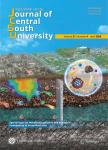Strength and damage evolution mechanism of rock mass with holes under cyclic loading
循环载荷作用下含孔岩体强度及损伤演化机制作者机构:School of Energy and Mining Engineering China University of Mining and Technology (Beijing) Beijing China Research Center of Roadway Support and Surrounding Rock Control Engineering in Coal Industry Beijing China
出 版 物:《Journal of Central South University》 (中南大学学报(英文版))
年 卷 期:2024年第31卷第8期
页 面:2717-2735页
核心收录:
学科分类:08[工学] 080502[工学-材料学] 0805[工学-材料科学与工程(可授工学、理学学位)]
基 金:Projects(U22A20165, 52004289) supported by the National Natural Science Foundation of China Projects(2022XJNY01, BBJ2024001) supported by the Fundamental Research Funds for the Central Universities,China
主 题:roadway surrounding rock control acoustic emission cyclic loading failure mode precursor of destruction
摘 要:The damage and failure law of rock mass with holes is of great significance to the stability control of roadways. This study investigates the mechanical properties and failure modes of porous rock masses under cyclic loading, elucidates the acoustic emission (AE) characteristics and their spatial evolution, and establishes the interrelation among AE, stress, strain, time, and cumulative damage. The results reveal that the rock mass with holes and the intact rock mass show softening and hardening characteristics after cyclic loading. The plastic strain of the rock mass with holes is smaller than that of the intact rock mass, and the stress - strain curve shows hysteresis characteristics. Under uniaxial compression, the pore-bearing rock mass shows the characteristics of higher ringing count, AE energy, b-value peak, and more cumulative ringing count in the failure stage, while it shows lower characteristics under cyclic action. At the initial stage of loading, compared with the intact rock mass, the pore-containing rock mass shows the characteristics of a low b-value. The AE positioning and cumulative damage percentage are larger, and the AE positioning is denser around the hole. The specimen with holes is mainly shear failure, and the complete specimen is mainly tensile shear failure.



